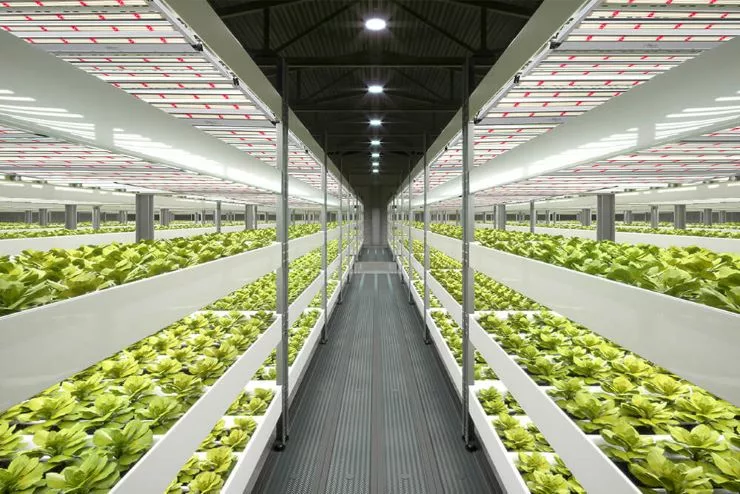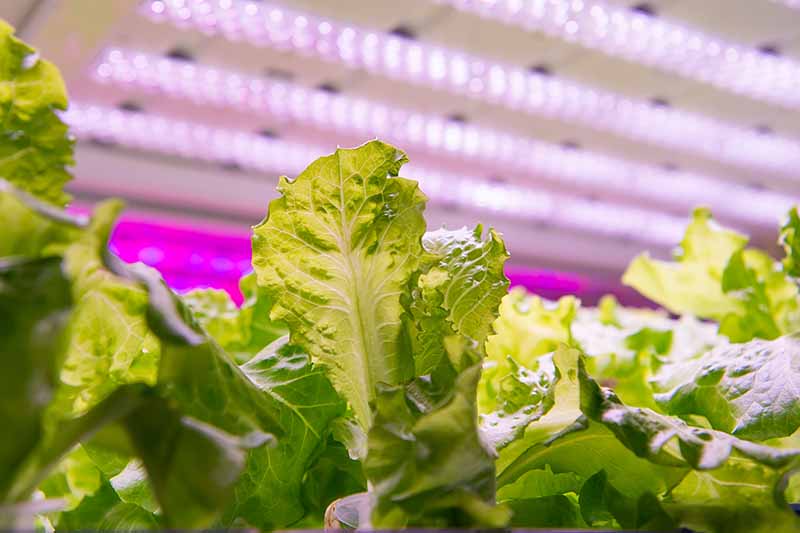Effects of light, planting density and harvesting period on yield and quality of lettuce in plant factories. The process of plant factory cultivation is affected by many factors, but light, planting density and harvesting period are the most important factors affecting the yield and quality of plants in plant factories. Light is the regulator of plant growth and development, morphogenesis, photosynthesis, metabolism and gene expression, and it can also be used as an environmental signal to regulate the whole life cycle of plants; planting density and harvesting period have a significant impact on the yield and quality of plant factory crops.
With the establishment of factory nursery and factory cultivation technology, the artificial light source applied to plant growth gradually from the traditional light source, to the direction of semiconductor lighting development, and at the same time, the optimal planting density and the optimal harvesting period is the crop factory production yield and quality assurance.

Progress in research on the effect of light environment on the morphology of plant factory crops, material metabolism, photosynthesis, yield quality, chlorophyll content changes, etc., to explore the optimal cultivation methods and harvesting period of plant factory crops, put forward the research objectives and significance of the spectral energy distribution, planting density and harvesting period of the impact of the formation of plant factory crop yield and quality, in order to improve the intelligent plant lighting system, standardization and facility crop cultivation technology, and to enhance the plant lighting system. The research purpose and significance of this study is to provide reference for the improvement of intelligent plant lighting system, standardization and the research of facility crop cultivation technology.
Plant factory production is a resource-intensive plant production mode, environmental stability, can realize the precise control of light, temperature, water, gas, fertilizer, does not take up farmland, product safety and pollution-free, yield per unit area can reach dozens of times or even hundreds of times more than the open-field cultivation, in the extreme environmental conditions can guarantee food supply and food safety. In addition, it also has the characteristics of energy saving, environmental protection and good quality of products. Therefore, the artificial light-type closed plant factory is an important means to realize the sustainable development of agriculture, and its development can help human beings to solve the important problems faced by the survival and development.
Aiming at the current situation of high energy consumption, insufficient research on light environment and lagging research on lettuce cultivation technology in plant factories in China, through the research on the effects of different spectra, light density, planting density and harvesting period on the yield and quality of lettuce in plant factories, we are looking for the lighting and light-control technology and crop cultivation technology suitable for use in the production of closed plant factories to improve the yield and quality of plant products and reduce the cost of manufacturing artificial light sources and operating costs. At the same time, it will improve the yield and quality of plant products, reduce the manufacturing cost and operation cost of artificial light source, provide scientific basis for the development of energy-saving, environmentally friendly and high-efficiency artificial light source in closed plant factories, and provide theoretical basis and data support for the cultivation of other crops in plant factories.
In this study, the effects of different spectra, optical density, planting density and harvesting period on the yield and quality of lettuce in plant factories were investigated using 'Green Collar' lettuce (Lactuca sativa L) as the test material, and it was found that.
1. the growth of lettuce plant height under red light (R) treatment was significantly faster than other treatments, the content of soluble protein, free amino acid, total chlorophyll was low, and chlorophyll a/b was significantly larger than other treatments; 75% red light + 25% blue light (RB31) treatment of lettuce leaf green content, vitamin C (Vc), and soluble sugar content was significantly larger than other treatments, and the content of nitrate was the lowest, and the best color quality of lettuce; 50% red light + 50% blue light (RB31) treatment was significantly larger than other treatments. Lettuce dry weight, plant height and carotenoid content were higher under 50% red light + 50% blue light (RB11), and the color quality of lettuce was better than that of other treatments; lettuce growth was slow under 25% red light + 75% blue light (RB13), and dry weight, plant height, chlorophyll content, carotenoid content and Vc content were smaller than that of other treatments, but lettuce crunchiness was the greatest; lettuce growth was slower under blue light (B) treatment than other treatments. The blue light (B) treatment had the lowest soluble sugar and sucrose content and the smallest sweetness.
The results showed that the biomass accumulation and quality of lettuce under RB31 treatment were higher, and it could be used as a suitable spectrum for lettuce cultivation in plant factories.
2. 150 μmol-m22.s' light intensity treatment, lettuce plant height was the highest, leaf area, water content and vitamin C content were significantly greater than other treatments; 200 μmol-m-2.s-1 light intensity treatment, lettuce aboveground fresh weight and total weight and free amino acid content were significantly greater than other treatments; 250 μmol-m2.s-1 light intensity treatment lettuce root weight was the highest; 300 μmol-m22.s-1 light intensity treatment lettuce root weight was the highest; 300 μmol-m2.s-1 light intensity treatment lettuce root weight was the highest; 300 μmol-m2.s-1 light intensity treatment lettuce root weight was the highest. The leaf area, water content, chlorophyll a, chlorophyll a+b and carotenoids of lettuce under the light intensity treatment of 300 μmol-m2.s-1 were smaller than those of other treatments, and the contents of soluble sugar and nitrate were higher.
The results showed that 200 μmol-m-2.s1 light intensity was the most suitable light intensity for lettuce production in plant factories, because the biomass of lettuce accumulated more, the water content was higher, and the quality of lettuce was better than that of other treatments.

3. 15cm×20cm spacing treatment, lettuce yield was the highest, lettuce dry weight was also higher; leaf area was higher in 15cm×20cm treatment; root vigor was stronger in 15cm×25cm and 20cm×20cm treatments; total chlorophyll and carotenoids were larger than other treatments in 10cm×20cm treatment, but there was no significant difference between other treatments; carotenoids were higher in 10cm×20cm treatment than other treatments; total chlorophyll and carotenoids were greater than other treatments. Carotenoids were the largest under the 10cm×20cm treatment; chlorophyll a/b was significantly larger than other treatments under the 10cm×10cm, 15cm×15cm, and 15cm×25cm treatments, while it was the lowest under the 10cm×20cm treatment. Soluble sugar and sucrose contents were higher under 20cm×20cm treatment, soluble protein and free nitrogen-based acid contents were larger under 10cm×20cm treatment, and vitamin C was higher under 20cm×25cm treatment.
The study showed that: 15cm×20cm plant spacing planting density, lettuce single plant yield and group yield are higher, lettuce growth, photosynthesis, better quality, can save costs, can get high yield and economic benefits, is the school appropriate planting density selection.
4. The harvesting period of 21d lettuce biomass accumulation, soluble protein, soluble sugar, vitamin C content is small; 28d harvested lettuce biomass is also small, sucrose, chlorophyll a, chlorophyll b and other content is low; 35d lettuce biomass accumulation, soluble sugar, soluble protein, sucrose, free amino acids, total chlorophyll, carotenoids and other quality indicators are higher; 42d lettuce biomass accumulation is high, the total amount of chlorophyll, carotenoids and other quality indicators; 42d lettuce biomass accumulation is high, the total amount of chlorophyll, carotenoids and other quality indexes. At 42d, the biomass of lettuce accumulated more, but the growth was slow, and the content of soluble protein and soluble sugar was lower.
The results showed that the biomass accumulation of lettuce under 35d treatment was higher and the quality was better, which could be the optimal harvesting period for lettuce in plant factories.
In conclusion, red and blue 3:1 is the optimal spectrum, 200 μmol-m2-s-1 is the optimal optical density, 15 cm×20 cm is the optimal planting density, and 35 d is the optimal harvesting period for lettuce in plant factories. The optimal spectrum, optical density, planting density and harvesting period not only can significantly promote the growth and development of lettuce in plant factories and yield quality, but also can reduce the cost of lettuce factory production, which can be used as the theoretical basis for lettuce production in plant factories.
